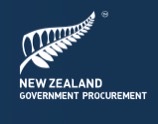Posted on: Sep 06, 2016
Should a WorkSafe NZ Inspector come onto your site for an inspection (or after a serious incident), one of their requests will be to see your documentation to verify the training you have provided to your workers. Can you put your hand on heart and say it’s all up to date???
As a PCBU (person conducting a business or undertaking), you have a responsibility under the new Health and Safety at Work Act to ensure your workers have sufficient information, are trained and supervised to enable them to be healthy and safe at work. See business.govt.nz for more information.
Inductions
The training should start with an Induction, giving the worker an overall perspective of your business and their role within it. An Induction should cover off the culture of the company, any policy and procedures and the expectations of the work required, so everyone is aware of what is required going forward. More specific Safety Inductions would also be required for hazardous roles and prior to operating machinery or handling potentially dangerous materials or equipment. This must also include supervision, to ensure the worker understands the processes, is wearing the correct personal protective gear and is working safely so as not to harm themselves or others in the workplace.
Ensure training is relevant and up to date
Regular reviews of training can vary from completing the Job Safety Analysis (JSA), or Safe Operating Procedures (SOP’s) and ensuring the workers are part of this process. This helps as the workers have first-hand knowledge of what really goes on, and are able to identify risks and processes that they are involved with in any given job on a day to day basis. Those who have the greatest control over a risk have the greatest responsibility for managing it.
Documentation!
These processes need to be documented and available for new workers to your business or for any workers moving into a new role. Talking about training and completing these tasks is not enough, each training session needs to be documented and if any new risks are identified, these too need to be documented into the hazard register. The training records need to be clear about what was discussed, what questions were asked by the workers, and perhaps any results of tests that were completed in regard to this part of training. The record needs to be signed off by the workers and the Manager/Supervisors completing the training.
How regularly are you completing refresher training?
Refresher training is as often as required by the business or the role. It may be annually, it may be monthly, or weekly in your toolbox meetings. It is up to your risk analysis to identify how often you require further training in any role. Any role that is high in risk, would require more frequent refresher training.
Good practice
So, good practice is to review what you have now and check:
- Does your Induction cover off health and safety?
- Is your training material up to date and relevant?
- Are you keeping adequate records?
- Are your workers trained to work safely and are they all working towards continuous improvement?
All these actions together will ensure higher productivity, a safer workplace culture and assist workers to keep themselves and others safe.
If you require an audit of your health and safety system or help with any training for health and safety, contact Paul Diver Associates and one of our team will be available to assist.
Disclaimer
This article, and any information contained on our website is necessarily brief and general in nature, and should not be substituted for professional advice. You should always seek professional advice before taking any action in relation to the matters addressed.








